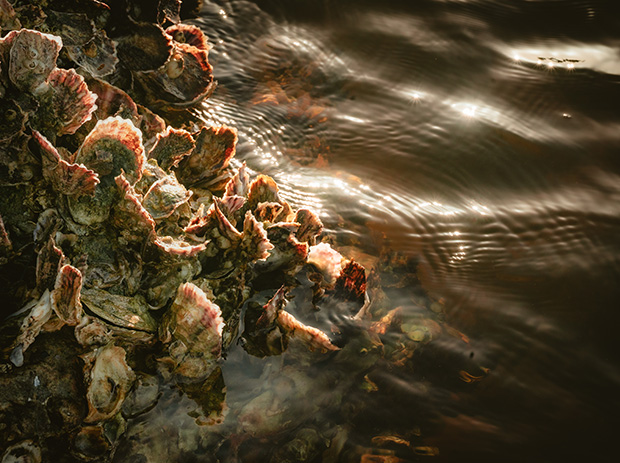

OYSTERS
SCIENTIFIC NAME: OSTREIDAE
Oysters are saltwater filter feeder bivalve mollusks, they live in brackish, estuary, and marine habitats. They are considered a “keystone” species because oysters do provide a habitat for other marine-dwelling species.
With approximately 200 species of oysters spanning the Atlantic and Pacific, there are many differences in appearance, taste, texture, and if they are farmed or wild. Pertaining to our region of the world, Atlantic oysters are native to the Atlantic coast, spanning all of North America and south to the Gulf of Mexico. In comparison to wild oysters of the Atlantic, farmed oysters utilize different precision growing methods to obtain size, flavor, and shell characteristics that from a culinary standpoint go a long way in terms of quality and presentation. Some farm growing and finishing methods include tumbled, sand-finished, bottom-finished, suspension, floor cages, floating bags, surface cages, floating trays, and mesh bags on racks. All of these integrated methods of oyster farming in conjunction with the local merroir influence the unique taste, texture, and appearance of an oyster.
FLAVOR INSPIRATION
A Generous Dash of Small Batch Hot Sauce Handcrafting a Piquant French Shallot Mignonette Macerated Meyer Lemons and Cracked Pink Peppercorns House-Made Fresh Horseradish Sauce Fresh Wasabi, for a Far East-Inspired Flavor Pickled Red Onions and Scallions A Ponzu Mignonette House Kilpatrick Sauce
COOKING INSPIRATION
White Wine, Garlic Butter, and Herb Baked Oysters Oysters Rockefeller with White Wine Grilled Oysters with Worcestershire, Parmesan, and Herbs Fried New England Oyster Basket Korean Oyster Pancakes Grilled Oysters with Roasted Garlic Butter and Crushed Red Pepper Char-Grilled Oysters parmesan Oyster Po’ Boy



